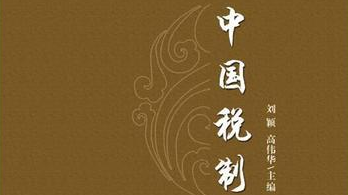
当前课程知识点:Culture and Tourism > Week 4: Cultural Landscapes: Meanings, Values, Assessment, Documentation > 4.1 Introduction of the Meaning of 'landscape’ > 4.1.1 Brief introduction of landscape and culture
返回《Culture and Tourism》慕课在线视频课程列表
返回《Culture and Tourism》慕课在线视频列表
大家好
我是Ken Taylor
我是堪培拉澳大利亚国立大学
遗产博物馆研究中心的名誉教授
也是曼谷艺术大学的客座教授
在那里我教授历史 地方管理和文化景观课程
在本讲演中
我将介绍文化景观 意义 价值 评估和文献
我将通过这些不同的部分
并参考几年前所参与的一个研究案例来完成讲演
我将从这张幻灯片上的引文开始
引文如是说
任何风景都是一种精神状态
换言之
这在我们的心中是非常重要的
我将在讨论过程中进一步阐述
第一部分是简要介绍
因此 第一节
本文以文化景观为例
探讨了文化遗产非物质价值的识别 保护
和管理的当代挑战
这并不是否认文化景观具有有形的物理形态
但更重要的是 在此文中
我想展示的是
它们展示了与景观意义相关的无形关联价值
然后是造景的人
住在里面的人
所有者 访客 游客
所有这些人都会对风景产生兴趣
因此 从最广泛意义上的社区的角度来看
这种对文化遗产的处理方式
特别是从文化景观的角度来看
这与我们所说的精英卡利什鉴赏文化遗产方法有所不同
那只是对著名的古迹 遗址和考古遗迹感兴趣
这种人们看待遗产的方式
直到20世纪80年代中期
那时起人们才开始谈论文化景观和更多无形的其他方面
因此 意义价值观的出现
现在又与文化遗产的概念联系在一起
引发了一个问题
文化与遗产这两个词的结合究竟意味着什么
换言之 也即文化遗产
文化或文化的一词源于文化
来源于澳大利亚人 或者说是来源于许多年前的澳大利亚人
Donald Horne很好地将其表述为
文化是生活有特殊意义的集体思维习惯和行为习惯的集合
我们生活的方式
以及我们如何发现我们存在的意义
和我们周围的世界 风景
同样来自澳大利亚的Denis Byrne在10年前评论说
我们中那些推动在遗产工作中承认非物质文化的人
也是那些倾向于强调文化遗产中的文化的人
他们不仅对事物和物品感兴趣
而且对遗产的社会方面感兴趣
因此 我将介绍文化景观的含义 价值观的概述
和相关的研究方法
解决无形方面和社区价值
然后 我将考察研究知识如何在实践中
用于揭示景观内涵的方法
特别是从这种观点来看
景观不仅仅是被视为物理成分和自然元素的集合
而是正如Dennis Cosgrove所建议的那样
他是一位地理学家
这是一种看待自己历史的方式
但是这种历史只能被理解为
更广泛的经济和社会历史的一部分
它有自己的假设和后果
但其起源和影响远超出对土地的使用
和感知范围的假设和后果
它有自己的表达技巧
相比其他文化实践领域共有的技巧
它试图了解我们周围的世界
并且对于批判性研究的关键是
对这些思维方式的探究引发了这个问题
请大家在讲演中始终记得我所说的这个问题
我们在讨论谁的价值
它是谁的遗产
-1.1 Introduction course outline and UNESCO World Heritage Program
--1.1.1 Introduction of culture and tourism course outline
--1.1.2 Introduction of UNESCO World Heritage Program(1)
--1.1.3 Introduction of UNESCO World Heritage Program(2)
-1.2 Cultural Heritage-1
--1.2.1 The meaning of culture heritage
--1.2.2 Criterion(i): masterpiece of human creative genius
--1.2.3 Criterion(ii): exhibit important interchange of human value
--1.2.4 Criterion(iii): bear a unique or at least exceptional testimony
--How can the public understand the importance of heritage?
-1.3 Cultural Heritage-2
--1.3.1 Criterion(iv): an outstanding example in human history
--1.3.2 Criterion(v): represent a culture or human interaction with environment
--1.3.3 Criterion(vi): associated with living traditions of outstanding universal significance
-1.4 Natural Heritage
--1.4.1 Natural heritage features, formations and criterions
--1.4.2 Cases studies of natural heritage
--Cultural landscape meanings: The case of West Lake, Hangzhou, China
--How to access heritage of your hometown?
-2.1 Mixed Culture and Natural Heritage
--2.1.1 Mixed heritage operational guidelines and cases (1)
--2.1.2 Mixed heritage operational guidelines and cases (2)
--2.1.3 Mixed heritage operational guidelines and cases(3)
-2.2 Authenticity, Integrity and Cultural Routes
--2.2.1 How to determine authenticity and integrity
--2.2.2 Heritage routes and heritage canals (1)
--2.2.3 Heritage routes and heritage canals (2)
--What do you think about cultural heritage categories?
-2.3 Special Heritage and Sustainable
--2.3.1 Physical remains of the history of technology and industry
--2.3.2 Transboundary Heritage, Serial Heritage, Serial/Transnational Heritage
--2.3.3 Intangible cultural heritage
--2.3.4 UNESCO World Heritage and Sustainable Tourism Programme
--Recovering the Memory of Ourselves for the Sustainable Cites
--Week 2 quiz
--What do you think about cultural heritage categories?
-3.1 The Australia’s Heritage System and Sydney Opera House
--3.1.1 The Australian Heritage System
--3.1.2 Case Study: The Sydney Opera House
-3.2 Role of the ISCCL and Cultural Landscape (1)
--3.2.2 Uluru-Kata Tjuta National Park
--3.2.3 Honghe Hani Rice Terraces
-3.3 Role of the ISCCL and Cultural Landscape (2)
--3.3.1 West Lake cultural landscape (1)
--3.3.2 West Lake cultural landscape (2)
-3.4 Rural Landscapes as Heritage
--3.4.1 ISCCL Principles Concerning Rural Landscapes as Heritage
-3.5 Case Study: Mongolian Altai
--3.5.1 Nature Culture Integration & the Mongolian Altai(1)
--3.5.2 Nature Culture Integration & the Mongolian Altai(2)
--Week 3 quiz
--Discussion: What do you think is the role of ISCCL?
-4.1 Introduction of the Meaning of 'landscape’
--4.1.1 Brief introduction of landscape and culture
--4.1.2 The conceptual framework of cultural landscape
-4.2 Landscape Values
--4.2.1 The word “landscape” itself and differences in Western, Eastern
--4.2.2 Cultural significance for heritage source
--Discussion: What do you think the cultural landscape attracts you?
-4.3 Reading the Landscape: Identification and Assessment
--4.3.1 Planning model for heritage conservation management policy
--4.3.2 Cultural landscape resources evaluation steps
--Article: Cultural mapping: Intangible values and engaging with communities with some reference to As
-4.4 Case Study: Wingecarribee Historic Landscape
--4.4.1 Case study:Wingecarribee historic landscape study(1)
--4.4.2 Case study:Wingecarribee historic landscape study(2)
--Week 4 quiz
--Discussion: What should we do to strengthen the protection of cultural landscape?
-5.1 Indigenous Tourism
--5.1.1 Indigenous tourism background
--5.1.2 World heritage and indigenous peoples
--5.1.3 Tourism issues at Canadian indigenous world heritage sites
--Discussion: What challenges indigenous World Heritage faces?
--Article: State conceptions of indigenous tourism in Chile
-5.2 Case Study and Conclusion: Great Expectations for Tourism
--5.2.1 Case study Pimachiowin Aki
--5.2.2 Conclusions:Great Expectations for Tourism
--Disussion: Do you have any experience of indigenous tourism?
--Week 5 quiz
-6.1 The Definition of Heritage in Heritage Performance Study
--6.1.1 The definition of heritage in heritage performance study
--6.1.2 Heritage performance and meaning making
--6.1.3 Two key issues emerging from qualitative study
-6.2 Heritage Performance - Evidence from Australia, England and USA
--6.2.1 Heritage performance - reinforcement
--6.2.2 Heritage Performance - inter-generational communication and social values
--6.2.3 Heritage performance - recognition and respect
--6.2.4 Heritage performance - education
--Article:Theorizing museum and heritage visiting
-6.3 The Conclusion of Heritage Performance
--6.3 The conclusion of heritage performance
--Week 6 quiz
--Discussion: What kinds of heritage performances have you learned in this week?


